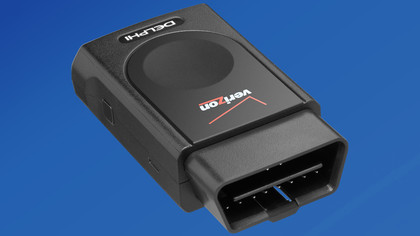5 techy connected car features available today
Smart car features for this year

We've been hearing about connected cars for some time. Robot drivers do the steering for us based on real-time mapping data - great! Payment systems tap into the local eatery for you - and even leave a tip - primo!
But these technologies are still somewhat on the drawing board. Sure, your car will drive you home - in 2020. What good is that to us now? You mean we still have to remember which peddle is which? Sigh.
But fear not, impatient car tech lovers. These smart features are coming out this year, and they're pretty exciting.
1. Chevy EcoHub
Connected feature: See your EV charging costs from your home computer.

Chevy is doing a limited trial in Texas right now to see how a small community called Pecan Street responds to total control over their Chevy Volt. Volt drivers can already check charge status quite easily on the web, using an app.
EcoHub goes a step further, by enabling you to see how car charging compares to overall energy consumption - though your home does need to be connected to a local smart grid for this to work. The app could eventually be used to always charge at the lowest rate possible. There's no reason the app won't be rolled out in the UK, but Chevy has made no firm announcements.
2. Ford MyEnergi Lifestyle
Connected feature: Automatically shift home charge time.
Get daily insight, inspiration and deals in your inbox
Sign up for breaking news, reviews, opinion, top tech deals, and more.

This brilliant research project, which will debut as part of an entire smart home in the US, centres on how you charge the C-Max electric car (available in the US and Canada only). Using the Ford MyFord mobile app, you can already see range estimates and pre-heat your car.
As the project progresses and one homeowner is selected for retrofitting that involves Whirlpool smart appliances and a Nest Learning Thermostat, the app will enable the C-Max driver to plan for charging times at the lowest rate, based on real-time energy usage. Another possible upgrade down the road is that the car would know when you've been using the dishwasher and water heater too much, and postpone charging automatically.
3. Delphi Connected Car
Connected feature: See driving habits and diagnostic info from your home PC.

You can rush right out and purchase a Nissan Leaf and benefit from a high degree of connectivity (and an iPhone app). But the Delphi Connected Car system works with older makes and models as well, including those made several years ago. The small OBD2 device snaps in under the dash and communicates over a wireless carrier signal, or you can also connect directly to the device over Bluetooth.
You can use the app to track routes, check for diagnostics issues, and even get an alert when someone drives out of a pre-determined area (called ge-fencing) or drives too fast. While this might seem like a feature only helicopter parents could love, it is also a good safety option. To find out if your car is compatible, check the Delphi Connected Car site.
4. Detroit Electric SP:01 power grid
Connected feature: Use your car to power your house in a disaster.

This EV sports car, currently being engineered in the UK, will be a marvel of connected car tech when it debuts this autumn. Not only will the range exceed many of the vehicles on the market today, hitting as high as 280km (174 miles) per charge, but there will be mobile apps for seeing charge status and setting climate controls remotely.
Most amazingly, you will be able to use your smartphone as a second dashboard that displays extra widgets, including a way to test your 0-60mph acceleration time or charging data that could include how much longer you can drive at your current speed. For those in disaster-prone areas, the SP:01 can even be used as a home generator to keep the power running.
5. GE WattStation Connect
Connected feature: Service shops can track costs and usage in aggregate.

When an EV driver pulls up to a charging station, he or she can typically use an app that shows cost information and rate of charge. For service shops and fleet managers, the GE WattStation Connect apps, which run in a web browser, show much more detailed information including the number of users charging at any given time and payments received.
The WattStation charging terminals are also highly connected themselves: they have an RFID tag and a QR code that smartphone users can scan to make a payment.
John Brandon has covered gadgets and cars for the past 12 years having published over 12,000 articles and tested nearly 8,000 products. He's nothing if not prolific. Before starting his writing career, he led an Information Design practice at a large consumer electronics retailer in the US. His hobbies include deep sea exploration, complaining about the weather, and engineering a vast multiverse conspiracy.
